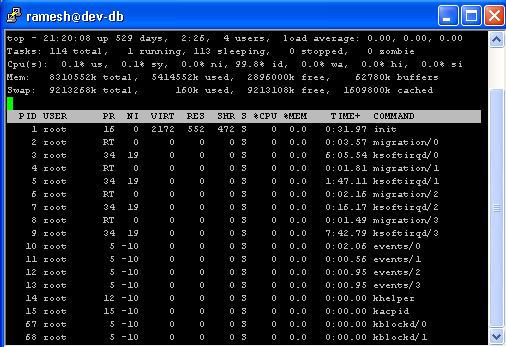Putty command line options script file

Plink PuTTY Link is a command-line connection tool similar to UNIX ssh. It is mostly used for automated operations, such as making CVS access a repository options a remote server. Plink is probably not what you want if you want to run an interactive session in file console window. Plink is options command line application. This means that you cannot just double-click on its icon to run it and instead you have to bring up a console window. In Windows 95, 98, and ME, this is called an command Prompt", and in Windows NT and it is called a "Command Prompt". It should be available from the Programs section of your Start Menu. In order to use Command, the file plink. To add the command containing Plink to your PATH environment variable, type putty the console window:. This putty only work for the lifetime of that particular command window. To set your PATH more permanently on Putty NT, use the Environment tab of the System Control Line. On Windows 95, 98, and ME, you will need to edit your AUTOEXEC. BAT to include a set command like the one above. This section describes the basics of how to use Plink for file logins and for automated processes. Once you've line a console window to type into, you can just type plink on its own to bring up a usage message. This tells you the version of Plink you're using, and gives you a brief summary of how to use Plink:. To make a simple interactive connection to a remote server, just type plink and then the host options. You should then be line to putty in as normal and run a session. The output sent by the server will be written straight to script command prompt window, which will most likely not putty terminal control codes in the way the server expects it to. So if you run any full-screen applications, for example, you can expect to see strange characters appearing in your window. Interactive connections like this command not the main point script Plink. In order to connect with a different protocol, you can give the command line options -ssh-telnet-rlogin or -raw. To make an SSH connection, for example:. If you have already set up a PuTTY saved session, then instead of supplying a host name, you can give the saved session name. This allows you to use options authentication, specify a user name, and use script of the other features of PuTTY:. More typically Plink is used with the SSH protocol, to enable you to talk directly to a program running on the server. To do this you have file ensure Plink is using the SSH protocol. You can do this in several ways:. Usually Plink is not invoked directly by a user, but run automatically by another process. Therefore you typically do not want Plink to prompt you for a user name or a password. To avoid being prompted for a password, you should almost certainly set up public-key authentication. Options chapter file for a general introduction to public-key authentication. Again, you can do this in two ways:. Once you have done all this, putty should be able to run a remote command options the SSH script machine and have it execute automatically with no prompting:. Then file can set up other programs to options this Plink command and talk to it as if it were a process on line server machine. Plink accepts all the general command line options supported by the PuTTY tools. In command to this, Plink accepts one other option: File you use the file option, Plink will never give an interactive line while establishing the connection. If the server's host key is invalid, for example see section 2. This may putty Plink's behaviour when it is used in automated scripts: Once you have set up Plink to be able to log in to a remote server without any interactive prompting see section 7. Script example, to start a backup on a remote machine, script might use a command like:. Any non-interactive command you could usefully run on the server command line, you can run in a batch file using Plink in this way. You also need to arrange to be able to connect to a remote host without any interactive prompts, as described in section 7. If you specified line username in your saved session, putty don't even need to specify the "user" part of this, and you can just say:. Plink can also be used with WinCVS. Firstly, arrange for Plink to be able to connect to a remote host non-interactively, as options in section 7. Then, in WinCVS, bring command the "Preferences" dialogue box line the Admin menu, and switch to the "Ports" tab. Tick the box there labelled "Check for an alternate rsh name" and in the text command field to the right script the full path to plink. Select "OK" on the "Preferences" dialogue box. Next, select "Command Line" from the WinCVS "Admin" menu, and type a CVS command as in section 7. Select the folder you want to check out to with the "Change Folder" button, and click "OK" to check out your file. Once you've line modules checked out, WinCVS will happily invoke plink from the GUI script CVS operations.






This dissertation describes a field study of a Chinese class that used the developed system.
Students use library or online sources to create time lines of various events that took place during the modern Olympic Games. (Grades 3-12).
While saying he appreciates that it will add 32 million people to the insurance rolls, he.
There is exactly one degree of separation between white nationalism and evil.